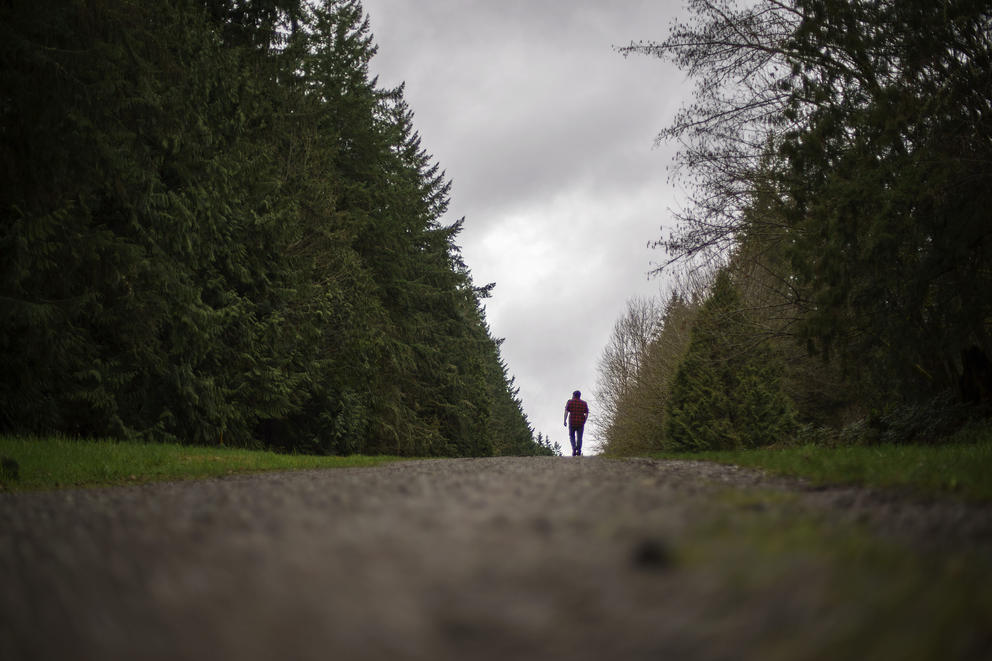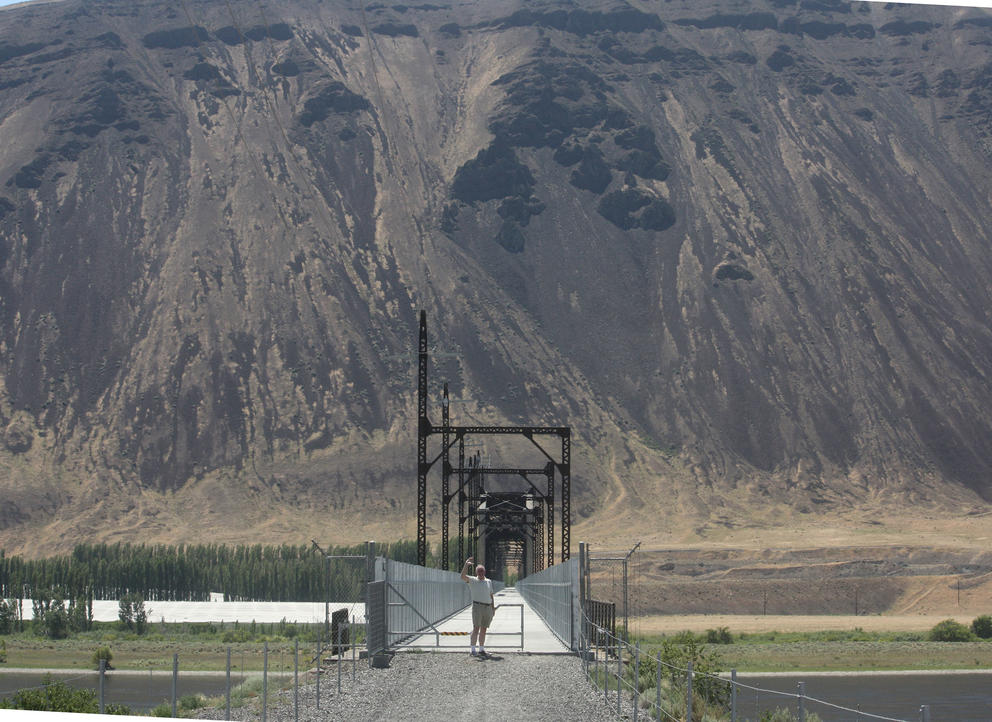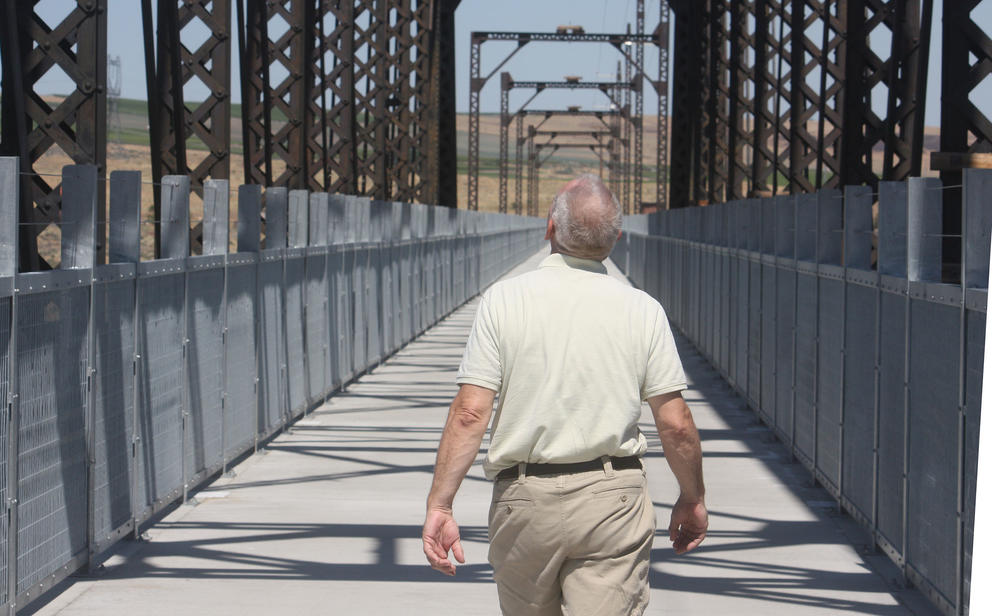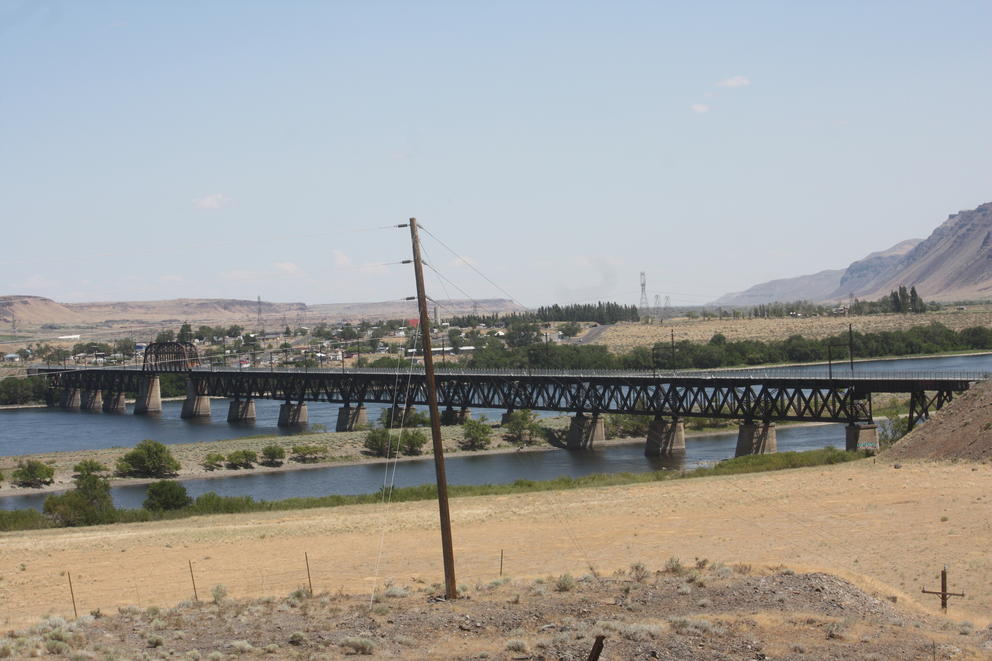He has hiked lush forests near Rattlesnake Lake, just west of Iron Horse Trail State Park. There’s the 2.3-mile Snoqualmie Tunnel, the longest on a trail in the United States. He has walked by farms in the upper Yakima Valley; along Keechelus Lake in Kittitas County with views of the Cascades; and in the dry sandy area east of the small town of Kittitas.
Last year, a railroad bridge across the Columbia River was upgraded to a hiking/biking concrete bridge – with views up and down the river and also space to accommodate equestrians.
As the trail heads east, it crosses open landscape created by Ice Age floods that revealed rugged rock outcrops with a railway grade of 1 or 2 percent. The rolling hills and wheat fields of Whitman County frame the trail’s eastern edge.
“The wide-open vistas, easy grade and rare visitors make it a great combination of both an arduous and relaxing adventure,” Wert said.
Smith is a hardcore bicyclist and state government wonk from Olympia. The Palouse-to-Cascades Trail intrigues him intellectually.
Partly for its history: old railroads. Land battles. Decades of politics. More controversy than you’d think for a rural trail.
But the trail also frustrates him.
“I can’t bike it. It’s not suitable for road bikes,” said Smith, who extensively bikes the back roads of the South Sound.
Smith is also intrigued by the future potential: a single trail from Idaho to the Pacific Coast. Could it connect to trail systems around Seattle and the Olympic Peninsula? Could riding regular bicycles across the state become a more realistic possibility?
Smith says yes, if the trail is upgraded from gravel to a harder surface to allow normal bikes. Wert is skeptical that that is a realistic goal, but notes that most of the trail is accessible to bike riders.
With its railroad origins, the Palouse-to-Cascades State Park Trail, owned by the Washington State Parks and Recreation Commission, is Washington’s link in a national Rails-to-Trails network. Created in 1986, the Rails-to-Trails Conservancy is a nonprofit based in Washington, D.C., that provides money and technical assistance for converting abandoned railroad lines into hiking and biking trails. Its crown jewel is a potentially 3,700-mile trail – with some gaps – from Washington, D.C. to Washington state.
Abandoned rail lines make great hiking and biking paths, said Smith, a Republican state Senate caucus staff member. That’s because railroads have shallower climbs than those made by roads. The Milwaukee line had exceptionally low grades of only 2.2% of less.
The Palouse-to-Cascades Trail stretches more than 285 miles from Cedar Falls, south of North Bend, east to the Idaho border. A half-dozen Washington agencies and private organizations currently manage about 250 miles of that pathway. The trail is not complete; the largest gap is roughly 35 miles of active rail line between Royal City and Warden, Washington. Another collection of gaps – about four miles total – pops up between Lind and Tekoa on this side of the Idaho border.
A gap exists between Tekoa and Plummer in western Idaho where the Trail of the Coeur d’Alenes continues the national Rails-to-Trails pathway.
Washington officials say the segment between Cedar Falls and the Columbia River in Central Washington is the most heavily used, with 378,100 users in 2020, 438,800 in 2021 and 326,500 in 2022. These include hikers, horseback riders and mountain bikers. Most of the trail is gravel, so non-mountain bikes are probably not in the trail’s future, Wert said.
The trail has gone through several upgrades in the past three years. These include restoring the 680-foot-long Renslow Trestle near Ellensburg and restoring the 975-foot Tekoa Trestle near the Idaho border. Trestle repairs and other surface and drainage improvements have yet to be finished between the towns of Malden and Rosalia.
In 2022 the state finished a $5.5 million overhaul of the 3,300-foot former railroad bridge crossing the Columbia River at Beverly.
The Beverly Bridge excites Smith, who sees it as a key piece of a cross-state bike path.
The trail has a complicated history. “I find this story fascinating, and I have been following it closely for the last 40 years,” Smith said.
In 1980 the Milwaukee Railroad, a freight carrier, went bankrupt and Ralph Munro became Washington’s longtime secretary of state. Munro thought the railway’s path was too valuable to pass up. The moderate Munro teamed up with conservative Sen. Sam Guess, R-Spokane, who thought the pathway could be an excellent site for a coal-slurry pipeline. “Some critics argued the state was buying a white elephant,” Smith said.
Smith wants a bike trail stretching across the state. In the mid-1970s, he biked across the state, hating the steep climb through Stevens Pass. At that time, the thought of a bike pathway on a railroad grade – normally 1 to 2 percent – entered his head. When the cross-state Milwaukee Railroad closed in 1980, Smith, a state politics junkie, thought such a bike trail became possible.
Munro and Guess shepherded the purchase through the Legislature. A few years later, by leasing the route to developers who needed a place to bury digital cabling, the state made its money back, Smith said. Meanwhile, the idea of using the railway for hiking and horseback riding gradually evolved. The pathway picked up the name John Wayne Pioneer Trail.
As the 1990s rolled in, several adjacent property owners wanted ownership of the rail pathway to revert to them. Meanwhile, then-Washington Lands Commissioner Brian Boyle wanted to remove several small bridges along the route in Eastern Washington. Munro successfully fought both attempts, including arguing that the small bridges could be repaired.
A couple of Republican lawmakers tried to eliminate 130 miles of the trail in 2015 by sneaking language into the state’s capital budget, according to The Associated Press and a biking blog. The purpose of that attempted takeover was to give the land to adjacent property owners. Reps. Joe Schmick, R-Colfax, and Mary Dye, R-Pomeroy, inserted language to close the trail from the Columbia River to Malden. But due to a typographical error, the passage read “from the Columbia River to the Columbia River,” negating it. Trail supporters then became aware of the planned move in time to stop it.
“The opposition has died down,” Wert said. And the trail has become more popular.
In 2018, the state changed the name of the John Wayne Pioneer Trail to the Palouse-to-Cascades Trail.
The next major step is to extend the trail west to Seattle and the Pacific Coast, said Randy Kline, trails coordinator for the Washington State Parks and Recreation Commission. No timetable has been set for that move, and the state has not allocated money for the project.
However, Kline noted there is an extensive trails network around and through Seattle. The existing 31-mile Snoqualmie Valley Trails runs from Cedar Falls to Duvall. From there, the problem is how to get across the rest of King County and Puget Sound. Plenty of trails exist in western King County to form the basis of a network.
West of Puget Sound, the obvious route is the 135-mile Olympic Discovery Trail – a combination of roads and biking/hiking paths – along the north side of the Olympic Peninsula. Another possibility is the Willapa Hills State Parks Trail. The task for the future will be figuring out how to connect those pieces.
This story has been updated throughout with clarifications and corrections, including noting the full name of the trail, correcting the name of Malden and the date that the Milwaukee line went out of business and adding more details about potential future plans.






